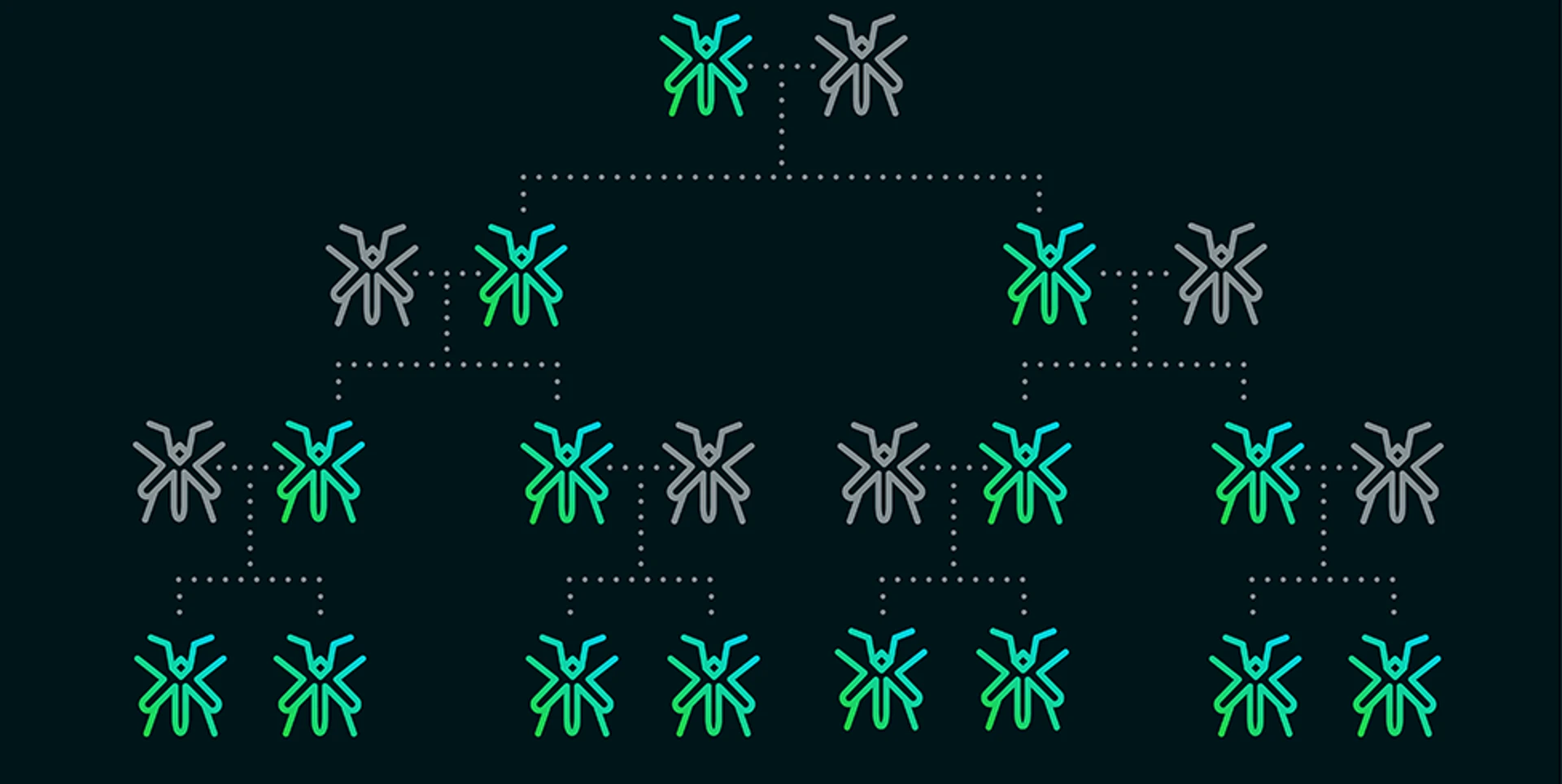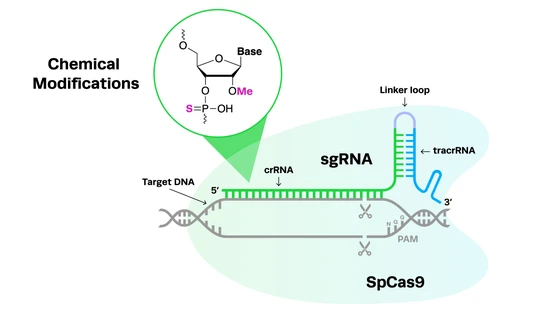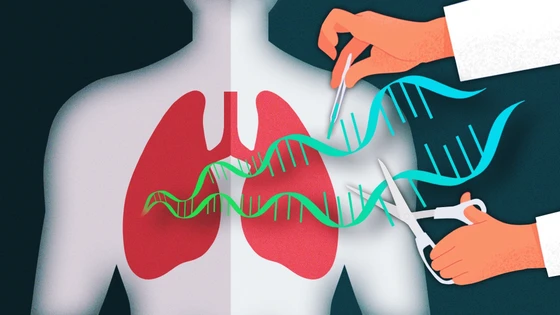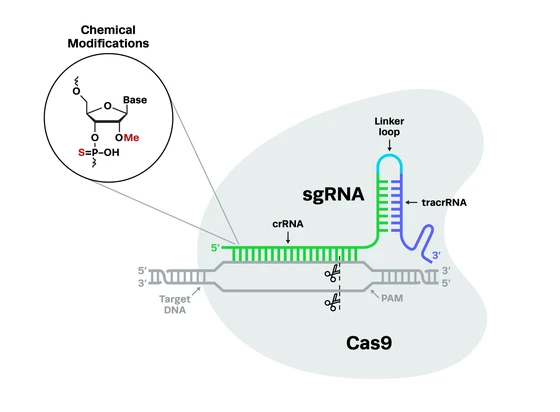The CRISPR-Cas9 genome editing technology was introduced about 7 years ago, and it is now one of the most widely used tools in biotechnology. If you find it hard to keep up with the countless applications of this technology surfacing each year, we are here to help! Last month, we reviewed the most notable CRISPR breakthroughs of 2018. In this post, we predict the new milestones that this technology might reach in 2019.
1. Gene And Cell Therapies Research Will Accelerate

Ever since the introduction of CRISPR, researchers have long awaited using this precise genome engineering tool for gene therapies, which involve precise genome modification in cells inside or outside the body. Recently, CAR-T cell immunotherapies have become popular due to their potential in the fight against cancer. Immunotherapy entails extracting immune cells from a patient, modifying them outside the body, and delivering them back into patients. Two such CAR-T therapies were approved by the FDA just a couple of years ago. CRISPR has beenknown to make CAR-T cells more potent against tumor cells, so we might see CRISPR edited CAR-T therapies in the clinic in 2019.
Additionally, the year 2018 saw another first. The FDA approved the CRISPR-based investigational therapy, CTX001, for treating blood disorders beta-thalassemia and sickle cell disease. The CTX001 therapy, an initiative by CRISPR Therapeutics and Vertex Pharmaceuticals, will be the first CRISPR human clinical trials. Given the current progress, we definitely expect 2019 to be a big year for CRISPR gene therapies.
"The precision of genome editing gives it the potential to develop an entirely new class of therapies for human disease."
Matthew Porteus, Professor at Stanford University, physician at the Lucille Packard Children’s Hospital, and pioneer of cell-based therapies.
2. CRISPR in Diagnostics Will be Huge

We are all familiar with the cut and paste functionality of CRISPR; the very basis of how this technology got its fame. Researchers then started exploring the different Cas nucleases and realized that Cas12 and Cas13 (recently Cas14 as well) can actually cut single-stranded DNA indiscriminately, once the guide RNA identifies its complementary target.
Academics and companies alike realized the huge potential CRISPR applications in diagnostics by exploiting its Cntrl F function using these nucleases. Researchers at MIT and Broad Institute also developed a CRISPR-based diagnosis tool called SHERLOCK (Specific High-sensitivity Enzymatic Reporter unLOCKing). Another company, Mammoth Biosciences, is focusing on developing CRISPR based diagnostic kits that include a fluorescent reporter dye to amplify the signal.
3. CRISPR Will Get Safer With Tighter Regulations Around Genome Editing

When the CRISPR technology was introduced, the co-inventors were clear that they intended to use this in somatic cells and not for germline editing. At the end of 2018 though, researcher He Jiankui from China claimed he has used CRISPR for editing human embryos, and twin girls were born from these genome edited embryos. This was a huge breach of ethical conduct agreed upon by the CRISPR community and led to several discussions about how to ensure proper use of this technology in the future.
The upcoming year will be a crucial one as the regulations around genome engineering will tighten following this incident. This, combined with healthy dialogue between researchers will help make CRISPR safe for its applications.
4. Genome Engineering Will Yield Improved Food

Agriculture has perhaps been one of the most impacted fields by CRISPR. Just in the past year, there have been several noteworthy applications of CRISPR in the agro-industry. In one example, researchers engineered genes from modern tomato plants into wild type ones using CRISPR-Cas9, such that the modified plant yielded 10 times more fruit and the fruit-size was also triple of that observed normally. Another recent CRISPR-mediated breakthrough in rice crops triggered asexual reproduction, enabling self-cloning of seeds.
This genome engineering technique is revolutionizing food beyond simply crop-modifications. Researchers are also using CRISPR for projects that would support sustainable beef production. In 2019, we expect great progress in these agro-bio projects, which are steps towards satisfying all our future qualitative and quantitative food needs.
5. CRISPR Companies Will Simplify Genome Engineering Research

The bottleneck of any new technology, especially in biology, is the initial learning and optimization associated with it. Several CRISPR companies are working to make the adoption of CRISPR easier by simplifying different aspects of the process.
Synthego strives to simplify all steps of the CRISPR workflow: design, edit, and analyze. The new Engineered Cells products are designed to further cut short the optimization time of researchers and help them achieve results faster by letting industry experts do the genome engineering.
Other CRISPR companies are working on different aspects such as improving in vivo delivery methods for CRISPR, revolutionizing Cas nucleases, and ensuring CRISPR can edit all cell types, respectively.
There is a consistent effort at industry and academic level to achieve higher efficiency in knock-ins. In 2019, we can expect further progress in products such that researchers have easy access to CRISPR tools and achieve faster results in their projects.
6. CRISPR Gene Drives Will Propagate

Gene drives are genetic elements that do not follow Mendelian laws of inheritance and propagate themselves by biasing their transmission to the next generation. In the past few years, CRISPR gene drives have made news because of their huge potential in eradicating diseases such as malaria by controlling mosquito population. Other applications include controlling invasive species and protecting endangered species.
CRISPR gene drives have huge potential, but researchers need to use these responsibly while considering the impact they may have on the community. While this is already a topic of discussion in the CRISPR community, we expect great outcomes of CRISPR gene drives projects in 2019.
7. Bioinformatics Will Emerge Strong in CRISPR Research

Biology and technology are now converging in this age of new computational tools. After the introduction of CRISPR, the primary need was to build design tools identifying the optimum guide RNA sequence for specific targeting of DNA. Several academic and commercial institutions rose up to the challenge and a few of these design tools have become widely popular.
Thereafter, the need shifted to analysis tools. Synthego introduced the ICE (Inference of CRISPR Edits) tool, which yields accurate results from Sanger sequencing data. As CRISPR research gallops forward, we expect even more bioinformatics tools and software that will expedite CRISPR research in 2019.
Every passing year, the CRISPR technology surpasses our expectations. In just a few years, it has transformed medicine, agriculture, biomaterials, and biofuels. Given its rate of progress in the past, we can only be excited about the year ahead to witness the ways CRISPR will impact our daily lives.







